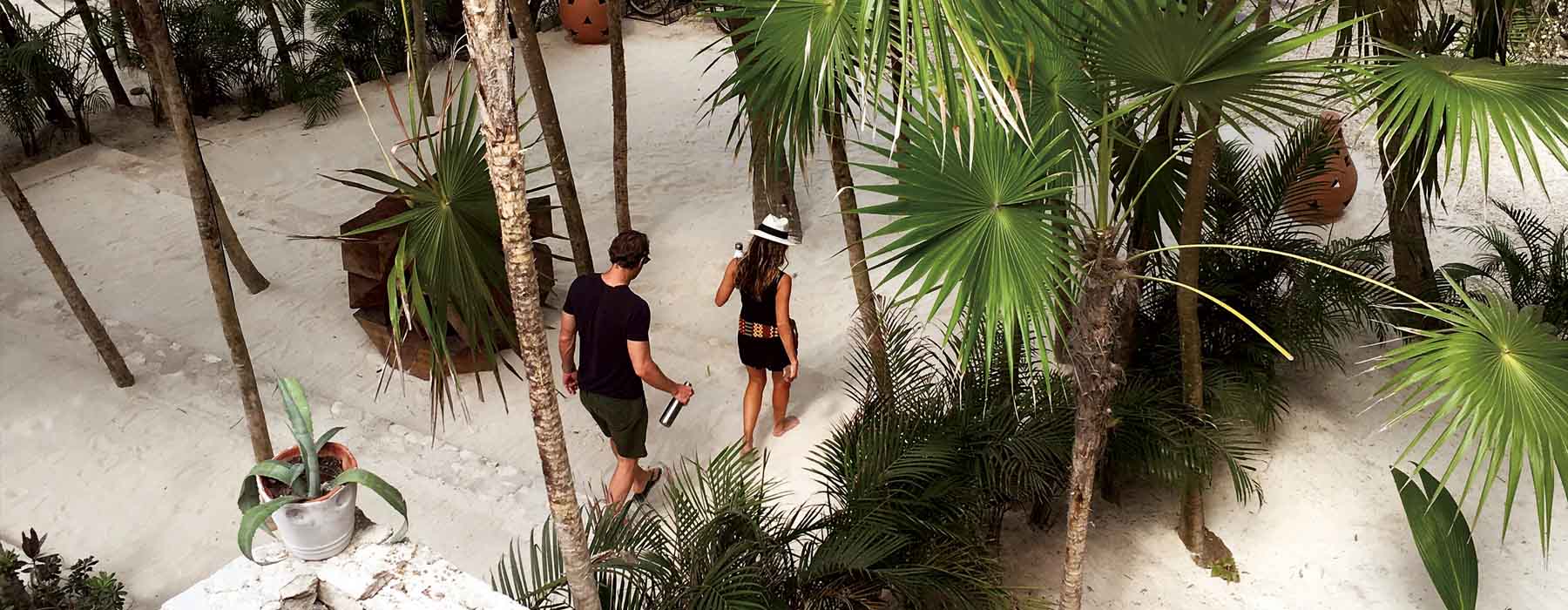Mexico is blessed with exceptional biological diversity, from the pristine beaches of the Riviera Maya to the lush jungles of Chiapas. The country is also rich in cultural capital, home to famous Mayan and Aztec ruins and a world-famous food scene. It’s easy to understand why visitors flock here each year. However, the rapid growth of tourism and urbanisation poses significant challenges to preserving these fragile ecosystems. Thankfully, Mexico has taken significant steps towards conservation, and was one of the first countries in the world to pass a specific law on climate change, setting an ambitious target to reduce national greenhouse gas emissions. The country also has a National Climate Change Strategy, which is intended to guide policymaking over the next 40 years. Read on for an overview of sustainability in Mexico, from the various initiatives, challenges and success stories that are shaping the country’s journey toward a greener future, to the vital role that visitors can play.
Challenges to sustainability in Mexico
Mexico, like most countries, faces several sustainability challenges. High levels of air and water pollution, particularly in urban areas, is a major concern. With more than 18 million people and six million cars in Mexico City alone, most of the air pollution is from industrial and automobile emissions. Meanwhile, deforestation and habitat loss threaten Mexico’s diverse ecosystems, including rainforests, mangroves and coral reefs. The country is also vulnerable to the impacts of climate change, including extreme weather events, higher temperatures and rising sea-levels, which affect agriculture, water resources and coastal communities. Socio-economic inequality is another significant challenge in Mexico, and it intersects with sustainability issues. Marginalised communities often bear the brunt of environmental degradation, lack of access to clean water and sanitation, and face limited opportunities for sustainable livelihoods.
Sustainable agriculture and farm-to-fork focus
Mexico’s rich agricultural heritage is deeply intertwined with its cultural identity. Traditional farming practices, such as milpa (planting nutritionally and environmentally complementary crops together) and chinampas (using floating gardens to grow crops without harming the environment), have sustained communities for millennia. Today, a growing movement towards sustainable agriculture is gaining momentum. Organic farming practices, permaculture and agroforestry are being embraced by farmers across the country, and the farm-to-fork movement is also increasing in popularity, with restaurants and markets sourcing locally grown, organic produce. By supporting small-scale farms and promoting sustainable practices, Mexico is not only preserving its culinary traditions but also ensuring food security and reducing the carbon footprint associated with long-distance food transportation.
Renewable energy revolution
Mexico’s commitment to renewable energy is truly inspiring. The country has set ambitious goals to generate 35% of its energy from clean sources by 2024. With abundant sunshine and strong winds, Mexico has become a global leader in solar and wind energy production. Massive solar farms, such as the Villanueva Solar Park, and wind farms, like the Oaxaca Wind Power Project, are transforming the energy landscape. Additionally, community-led initiatives, such as cooperatives and microgrids, are empowering rural communities to generate their own clean energy and contribute to boosting sustainability in Mexico.
Waste management and recycling
Like many countries, Mexico faces challenges in waste management. However, innovative solutions are emerging to tackle this issue head-on. Community recycling programmes, waste separation initiatives and the promotion of composting are becoming more prevalent. In built-up areas like Mexico City, waste-to-energy plants are being implemented to convert organic waste into biogas. And grass roots organisations are working tirelessly to raise awareness about the importance of reducing, reusing and recycling. By embracing a circular economy mindset and implementing effective waste management strategies, Mexico is taking significant strides towards minimising its environmental impact.
Sustainable tourism and community empowerment
Sustainable tourism is key to future-proofing a destination and the businesses that rely on tourism for their survival. Fortunately, sustainable tourism is a natural fit for Mexico thanks to its plentiful environmental, social and cultural assets. Ecotourism initiatives – such as community-based tourism in Indigenous communities – provide economic opportunities while preserving cultural heritage and natural resources. Sustainable hotels and eco-lodges are on the rise, offering travellers the chance to experience Mexico’s outstanding natural beauty while minimising their ecological footprint. Additionally, initiatives like the Pueblos Magicos programme promote tourism in lesser-known towns, spreading the economic benefits beyond the obvious tourist hotspots. The country’s national parks, such as the Biosphere Reserves of Sian Ka’an and Calakmul, play a key role too, helping to protect biodiversity and promote sustainable tourism practices, while initiatives like the Great Maya Reef Project focus on coral reef restoration and sustainable fishing practices.
The Importance of individual action
Tourism may not be able to erase its carbon footprint entirely but there are ways that individual travellers can contribute to sustainability in Mexico:
- Dine at restaurants that use organic and locally-sourced ingredients (our local Concierges can recommend the top spots to try)
- Buy souvenirs from vendors that source from local artisans and pay them fairly
- Choose accommodation that’s focused on sustainability
- Take showers rather than baths, turn off air conditioning when leaving your hotel room and report any leaks
- Carry a reusable water bottle and recycled carrier bags to reduce the reliance on single-use plastics
- Stick to marked trails to protect fragile ecosystems and preserve sacred cultural sites



